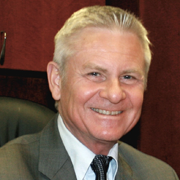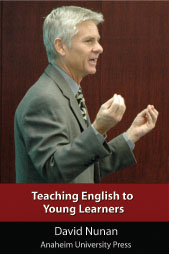
Vice President of Academic Affairs
Doctor of Education in TESOL Program Designer
Senior TESOL Professor, Graduate School of Education
Dr. Rod Ellis is Vice President of Academic Affairs, Senior TESOL Professor and the designer of the Doctor of Education in TESOL degree program at Anaheim University. A distinguished thought leader in the field of Second Language Acquisition, Prof. Ellis received his Doctorate from the University of London and his Master of Education from the University of Bristol. A former professor at Temple University both in Japan and the US, Prof. Ellis has served as the Director of the Institute of Language Teaching and Learning at the University of Auckland, a John Curtin Distinguished Professor at Curtin University, and has taught in numerous positions in England, Japan, the US, Zambia and New Zealand. Dr. Ellis, who is known as an expert in Second Language Acquisition, is author of the Oxford University Press Duke of Edinburgh Award-Winning Classic "The Study of Second Language Acquisition", as well as numerous student and teacher-training textbooks for Prentice Hall and Oxford University Press, Prof. Ellis's textbooks on Second Language Acquisition and Grammar are core textbooks in TESOL and Linguistics programs around the world.
Publications
Academic Publications
Books
- Ellis, R. (1984). Classroom second language development. Oxford: Pergamon (subsequently reprinted in 1987 by Prentice Hall).
- Ellis, R. (1985). Understanding second language acquisition. Oxford: Oxford University Press (awarded prize by British Association of Applied Linguists).
- Ellis, R. (Ed.). (1987). Second language acquisition in context. Prentice Hall (awarded prize by Modern Language Association of America).
- Ellis, R., & Rathbone, M. (1987). The acquisition of German in a classroom context. Ealing College of Higher Education.
- Ellis, R. (Ed.). (1989). Classroom language learning. Special issue of System, 17, 2.
- Ellis, R. (1990). Instructed second language acquisition. Blackwell.
- Ellis, R. (1992). Second language acquisition and language pedagogy. Multilingual Matters.
- Ellis, R. (1994). The study of second language acquisition. Oxford: Oxford University Press (awarded the Duke of Edinburgh prize for the best book in applied linguistics).
- Ellis, R. (1997). Second language acquisition. In Oxford Introduction to Linguistics. Oxford: Oxford University Press.
- Ellis, R. (1997). SLA research and language teaching. Oxford: Oxford University Press.
- Ellis, R. (1998). First steps in reading: A Teacher's handbook for using starter readers in the primary school. Oxford: Heinemann.
- Ellis, R. (1999). Learning a Second Language Through Interaction. Amsterdam: John Benjamins.
- Ellis, R. (2001) Form-Focussed Instruction and Second Language Learning (ed.). Special issue of Language Learning. Oxford: Blackwell.
- Ellis, R. (2003) Task-based Language Learning and Teaching. Oxford: Oxford University Press
- Ellis, R. (2005) Analyzing Learner Language. Oxford: Oxford University Press (with Gary Barkhuizen)
- Ellis, R. (2005) Planning in Task-based Performance. Amsterdam: John Benjamins (editor).
- Ellis, R. (2012) Language Teaching Research and Language Pedagogy. Hoboken: Wiley-Blackwell.
Articles
- Ellis, R., & Wells, G. (1980). Enabling factors in adult-child discourse. First Language, 1, 46-62. (Also in Wells, G. (1985). Language, learning and education. (Nelson).
- Ellis, R. (1980). Learning to read through a second language. Reading, 14 , 2.
- Ellis, R. (1980). Classroom interaction and its relation to second language learning. RELC Journal, 11, 2.
- Ellis, R. (1981). The role of input in language acquisition: some implications for language teaching. Applied Linguistics, 2 , 1.
- Ellis, R. (1982). The origins of interlanguage.Applied Linguistics, 3, 3.
- Ellis, R. (1984). Communicative strategies and the evaluation of communicative performance. ELTJ, 38, 1.
- Ellis, R. (1984). Can syntax be taught? A study of the effects of formal instruction on the acquisition of WH questions by children. Applied Linguistics, 3, 3.
- Ellis, R. (1984). Formulaic speech in early classroom second language development. In J. Handscombe, R. Orem, & B. Taylor (Eds.), On TESOL '83: The question of control. TESOL.
- Ellis, R. (1984). The role of instruction in second language development. In D. Singleton & D. Little (Eds.), Language learning in formal and informal contexts. IRAAL.
- Ellis, R. (1984). Discussant. In A. Davies, C. Criper, & T. Howatt (Eds.), Interlanguage. Edinburgh University Press.
- Ellis, R. (1985). Teacher-pupil interaction in second language development. In S. Gass & C. Madden (Eds.), Input in second language acquisition. Newbury House.
- Ellis, R. (1985). Sources of variability in interlanguage. Applied Linguistics, 6 , 2.
- Ellis, R. (1985). A variable competence model of second language acquisition. IRAL, 23, 1.
- Ellis, R. (1985). The L1=L2 hypothesis: a reconsideration. System, 13, 1.
- Ellis, R. (1987). Interlanguage variability in narrative discourse: style shifting in the past tense. Studies in Second Language Acquisition, 9, 1.
- Ellis, R. (1987) Contextual variability in second language acquisition and the relevancy of language teaching. In R. Ellis (Ed.), Second language acquisition in context. Pergamon.
- Ellis, R. (1987). Does remedial instruction work? A L2 acquisition perspective. In J. Coleman & R. Towell (Eds.), The advanced language learner. AFLS/ SULFRA and CILT.
- Ellis, R. (1987). Developing interlanguage through fluency. Focus on English, 3 , 3.
- Ellis, R. (1988). The effects of linguistic environment on the second language acquisition of grammatical rules. Applied Linguistics, 8, 3.
- Ellis, R. (1988). The role of practice in classroom language learning. Teanga, 8, 1. (Also in G. Kasper (Ed.), AILA Review 5.AILA.)
- Ellis, R. (1989) Are classroom and naturalistic second language acquisition the same? Studies in Second Language Acquisition, 11, 3.
- Ellis, R. (1989). Classroom learning styles and their effect on second language acquisition: a study of two learners. System, 17, 2.
- Ellis, R. (1989). Sources of intra-learner variability in language use and their relationship to second language acquisition. In S. Gass, C. Madden, D. Preston, & L. Selinker (Eds.), Variation in second language acquisition: Psycholinguistic issues. Multilingual Matters.
- Ellis, R. (1989). Second language learning and second language learners: Growth and diversity, TESL Canada, 7, 1.
- Ellis, R. (1990). Individual learning styles in classroom second language development. In J. de Jong & D. Stevenson (Eds.), Individualizing the assessment of language abilities. Multilingual Matters.
- Ellis, R. (1990). Response to Gregg. Applied Linguistics, 11, 4.
- Ellis, R. (1990). Grammaticality judgments and learner variation. In H. Burmesiter & P. Rounds (Eds.), Variability in second language acquisition, proceedings of the tenth meeting of SLRF.University of Oregon.
- Ellis, R. (1990). Researching classroom language learning. In C. Brumfit & R. Mitchell (Eds.), ELT Documents 133: Research in the language classroom. Modern English Publications.
- Ellis, R. (1991). Grammaticality judgements and second language acquisition. Studies in Second Language Acquisition, 13 , 3.
- Ellis, R. (1992). Learning to communicate in the classroom: a study of two language learners' requests. Studies in Second Language Acquisition, 14, 1. (Also in H. D. Brown & S. Gonzo (1995). Readings on second language acquisition. Prentice Hall.)
- Ellis, R. (1992). The classroom context - an acquisition rich or an acquisition poor environment? In C. Kramsch (Ed.), Text and Context. D.C. Heath.
- Ellis, R. (1992). Comprehension and the acquisition of grammatical knowledge in a second language. In R. Courchene, J. Glidden, J. St. John & C. Therien (Eds.), Comprehension-based second language teaching. University of Ottowa.
- Ellis, R. (1992). The interaction hypothesis: a critical evaulation. In E. Sadtano (Ed.), Language acquisition and the second/ foreign language classroom. RELC.
- Ellis, R. (1992). Grammar teaching and grammar learning. Proceedings of the 2nd conference on Second Language Acquisition in a Chinese Context. Hong Kong: Chinese University.
- Ellis, R. (1992). On the relationship between formal practice and second language acquisition. Neueren Sprachen, 91, 2.
- Ellis, R. (1993). Variability and the natural order hypothesis. In R. Barasch & C. Vaughan James (Eds.), Beyond the monitor model. Boston: Heinle and Heinle.
- Ellis, R. (1993). The structural syllabus and second language acquisition. TESOL Quarterly, 27, 91-113.
- Ellis, R. (1993). Naturally simplified input, comprehension and second language acquisition. In M. Tickoo (Ed.), Simplification theory and application. Singapore: SEAMEO Regional Language Centre.
- Ellis, R. (1994). Implicit/ Explicit knowledge and language pedagogy. TESOL Quarterly, 28, 166-172.
- Ellis, R., Tanaka, Y., & Yamazaki, A. (1994). Classroom interaction, comprehension, and the acquisition of L2 word meanings. Language Learning, 44, 449-491.
- Ellis, R., Rosszell, H., & Takashima, H. (1994). Down the "garden path": Another look at negative feedback. JALT Journal, 16, 9-24.
- Ellis, R. (1994). Factors in the incidental acquisition of second language vocabulary from oral input: A review essay. Applied Language Learning, 5, 1-32.
- Ellis, R. (1994). Immersion education: Is there a role for formal L2 instruction? In M. Bostwick (Ed.), Proceedings of the conference on 'Second Language Acquisition Through Content Based Study'. Katoh Gakuen.
- Ellis, R. (1994). A theory of instructed second language acquisition. In N. Ellis (Ed.), Implicit and explicit learning of languages. Academic Press.
- Ellis, R. (1995). Interpretation tasks for grammar teaching. TESOL Quarterly, 29 , 1.
- Ellis, R. (1995). Modified input and the acquisition of word meanings. Applied Linguistics, 16, 4.
- Ellis, R. (1997). SLA and language pedagogy: An educational perspective. Studies in Second Language Acquisition, 19, 69-92.
- Ellis, R. (1998). Teaching and research: Options in grammar teaching. TESOL Quarterly, 32, 39-60.
- Ellis, R. (1998). Implicit knowledge, explicit knowledge and general language proficiency. Language Teaching Research, 2, 1-23.
- Ellis, R. (1998). Discourse-control and the acquisition-rich classroom. In W. Renandya & G. Jacobs (Eds.), Learners and language learning. Singapore: SEAMEO Regional Language Centre.
- Ellis, R. (1998). Evaluating and researching grammar consciousness tasks. In P. Rea-Dickens & K. Germaine (Eds.), Managing evaluation and innovation in language teaching. Harlow: Longman.
- Ellis, R. (1998). Second language acquisition research - what's in it for teachers? In P. Grundy (Ed.), IATEFL 1998: Manchester Conference selections. IATEFL.
- Ellis, R. (1999). Input-based approaches to teaching grammar: A review of classroom-oriented research. Annual Review of Applied Linguistics, 19, 64-80.
- Ellis, R., & He, X. (1999). The roles of modified input and output in the incidental acquisition of word meanings. Studies in Second Language Acquisition, 21, 285-310.
- Ellis, R. (1999). Item versus system learning: explaining free variation. Applied Linguistics, 20, 460-480.
- Ellis, R. (1999). The place of grammar instruction in the second/foreign language curriculum. New Zealand Studies in Applied Linguistics, 5, 1-21
School Textbooks and Teacher Education
Books
- Ellis, R., & Tomlinson, B. (1970). English through situations, Bks, 1, 2 and 3. Longman.
- Ellis, R. (1978). Fact and fiction in junior comprehension. Heinemann Educational.
- Ellis, R., & Tomlinson, B. (1980). Teaching secondary English: A guide to the teaching of English as a second language in Africa. Longman.
- Ellis, R., Mbhele, S., Thembela, A., & Robinson, B. (1985-1990). Let's use English Standard, 5, 6, 7, 8, 9 and 10. Heinemann Educational.
- Ellis, R., Brumfit, C., & Levine, J. (Eds.). (1985). ELT Documents 121: English as a second language in the United Kingdom. Pergamon.
- Ellis, R., & Tomlinson, B. (1986). Speaking 2. Oxford: Oxford University Press.
- Ellis, R., & Tomlinson, B. (1987). Reading 3. Oxford: Oxford University Press.
- Ellis, R., & Tomlinson, B. (1988). Reading 4. Oxford: Oxford University Press.
- Ellis, R., Mothlagodi, E., Murray, S., & Rodseth, V. (1992). Let's use English Sub A. Heinemann Educational.
- Ellis, R., & Murray, S. (1993). Let's use English Sub B. Heinemann Educational.
- Ellis, R., Mbehele, Y., & Thembela, A. (1994). Let's use English Standard 6 (2nd ed.).
- Ellis, R., & Murray, S. (1995). Let's use English Standard 1. Heinemann Educational.
- Ellis, R., Hegelson, M., Browne, C., Gorsuch, G., & Schwab, J. (1995). Impact . Longman, Asia.
- Ellis, R. (Ed.). (1995). JAWS starters (a series of readers for primary schools in Africa). Heinemann Educational.
- Ellis, R., & Sano, F. (1996). Impact intro. Longman, Asia.
- Ellis, R., & Gaies, S. (1998). Impact grammar. Longman, Asia.
Articles
- Ellis, R. (1980). Developing reading efficiency. Modern English Teacher, 7, 3.
- Ellis, R., & Robinson, B. (1981). A reassessment of lesson evaluation in ELTJ. System, 9, 1.
- Ellis, R. (1982). Informal and formal approaches to communicative language teaching. ELTJ, 36, 2.
- Ellis, R. (1982). Reading as a communicative process. Proceedings of the Annual Conference of the Moroccan Association of Teachers.
- Ellis, R. (1985). Marking students written work. ELTIC, 8, 1.
- Ellis, R. (1985). Policy and provision for ESL in schools. In C. Brumfit, J. Levine and R. Ellis (Eds.), ELT Documents 121: English as a Second language in the United Kingdom. Pergamon.
- Ellis, R. (1988). Using the English medium in African schools. In D. Young (Ed.), Bridging the gap: Essays in honour of L.W. Lanham. Maskew Miller/ Longman.
- Ellis, R. (1991). Communicative competence and the Japanese learner. JALT Journal, 13, 2.
- Ellis, R. (1991). Grammar teaching - practice or consciousness-raising? In R. Ellis (Ed.), Second language acquisition and language pedagogy, multilingual matters.
- Ellis, R., & Fotos, S. (1992). Communicating about grammar - a task-based approach. TESOL Quarterly, 26, 1.
- Ellis, R. (1993). Talking shop: second language acquisition - how does it help teachers? ELTJ, 47, 3-11.
- Ellis, R. (1993). Interpretation-based grammar teaching. System, 21, 1.
- Ellis, R. (1993) Focussed communication tasks. ELT Journal, 47, 203-210.
- Ellis, R. (1994). Second language acquisition research and teacher development: The case of teachers' questions. In Li, D. Mahoney, & J. Richards (Eds.), Exploring second language teacher development. Hong Kong: City Polytechnic of Hong Kong.
- Ellis, R. (1995). Does it 'work'? Evaluating tasks. MATSDA Journal.
- Ellis, R. (1997). The empirical evaluation of language teaching materials. English Language Teaching Journal, 51, 36-42.
- Ellis, R. (1998). The evaluation of communicative tasks. In B. Tomlinson (Ed.), Materials development in language teaching. Cambridge: Cambridge University Press.
Book Reviews:
- 1982 S Krashen's "Second Language Acquisition and Second Language Learning," BAAL Newsletter, 12.
- 1982 S Krashen's "Second Language Acquisition and Second Language Learning," ELTJ, 36, 3.
- 1983 J Alatis,N Altman and P Alatis (eds.) "The Second Language Classroom," ELTJ, 37, 4.
- 1984 H Wode's "Papers on Second Language Acquisition, Language Learning and Language Teaching," BAAL Newsletter.
- 1985 L Selinker and S Gass "Workbook in Second Language Acquisition," ELTJ, 39.
- 1989 C Faerch and G Kasper (eds.) "Introspection in Second Language Research," Applied Linguistics.
- 1991 B Harley, P Allen, M Swain and J Cummins "The Development of Second Language Proficiency," Studies in Second Language Acquisition.
- 1996 F. Eckman et al. "Second Language Acquisition Theory and Language Pedagogy," Studies in Second Language Acquisition, 19, 1.









 Students are expected to complete the TESOL Certificate within the prescribed 15-week term. Students requiring a 15-week extension will be charged an additional $200 extension fee.
Students are expected to complete the TESOL Certificate within the prescribed 15-week term. Students requiring a 15-week extension will be charged an additional $200 extension fee.